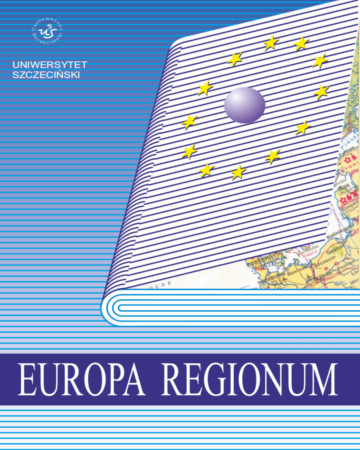
ISSN: 1428-278X
eISSN: 2717-437X
OAI
DOI: 10.18276/er.2018.37-07


Issue archive /
t. 37 2018
Wartości wewnętrzne i użytkowe wydm nadmorskich w Polsce na tle światowych trendów zarządzania
(Intrinsic and instrumental values of coastal dunes in Poland in relation to global trends of management)
| Authors: |
Tomasz Arkadiusz
Łabuz
Uniwersytet Szczeciński |
| Keywords: | environmental valuation development management methods threats coastal dunes polish coast |
| Data publikacji całości: | 2018-12-31 |
| Page range: | 22 (101-122) |
| Klasyfikacja JEL: | Q26 Q51 Q57 |
Abstract
The coastal area for the centuries has been performed economic, settlement and defense functions. The disappearance of natural habitats and natural resources as a result of land development caused the need to designate protection zones. However, their area in Poland is insufficient due to the unlimited development of tourist services on the coast. The contemporary approach to the needs of environmental protection distributes human utility values (meaning as instrumental) from intrinsic values of nature. Both human and nature have the right to function and develop. Natural environment is giving many non economic benefits. If, in modern management methods, the human-nature conflict will be not resolved in the future, there will be no natural coastal areas in Poland. This paper presents the methods of valuing the natural environment in the context of the need to preserve the natural values of coastal dunes.
Download file
Article file
Bibliography
| 1. | Bayram, S.A. (2012). On the Role of Intrinsic Value in Terms of Environmental Education. Procedia – Social and Behavioral Sciences, 47, 1087–1091. |
| 2. | Carson, R.T., Flores, N.E., Meade, N.F. (2000). Contingent Valuation: Controversies and Evidence. San Diego: Department of Economics, University of California. |
| 3. | Chan, K.M., Balvanera, P., Benessaiah, K., Chapman, M.J., Díaz, S., Gómez-Baggethun, E. i in. (2016). Opinion: Why Protect Nature? Rethinking Values and the Environment. Proceedings of the National Academy of Sciences-Biology, 113, 1462–1465. |
| 4. | David, G., Henon, C., Chaboud, C., Plante R. (2003). World and Local Heritage, the Relationships Between Conservation and Development: The Example of the Coelacanth. International Journal of Environment and Sustainable Development, 2 (2), 122–138. |
| 5. | Doody, J.P. (2013). Sand Dune Conservation Management and Restoration. Coastal Research Library. Dordrecht, Heildelberg, New York, London: Springer. |
| 6. | Kareiva, P. (2014). New Conservation: Setting the Record Straight and Finding Common Ground. Conservation Biology, 00 (0), 1–3. |
| 7. | Kopnina, H., Washington, H., Gray, J., Taylor, B. (2018). The ‘Future of Conservation’ Debate: Defending Ecocentrism and the Nature Needs Half Movement. Biological Conservation, 217, 140–148. |
| 8. | Łabuz, T.A. (2003). Współczesne przekształcenia antropogeniczne środowiska wydm nadmorskich zachodniego i środkowego wybrzeża Polski. W: J.M. Waga, K. Kocel (red.), Człowiek w środowisku przyrodniczym – zapis działalności (s. 125–130). Sosnowiec: Polskie Towarzystwo Geograficzne, Uniwersytet Śląski. |
| 9. | Łabuz, T.A. (2005). Zagospodarowanie strefy wydm nadmorskich w miejscowościach wybrzeża Zatoki Pomorskiej. W: R.K. Borówka, S. Musielak (red.), Środowisko przyrodnicze wybrzeży zatoki Pomorskiej i Zalewu Szczecińskiego. Wybrane aspekty (s. 149–158). Szczecin: PTG, Instytut Nauk o Morzu US, Oficyna In Plus. |
| 10. | Łabuz, T.A. (2007a). Wzrost zagospodarowania turystycznego polskiego wybrzeża w sprzeczności ze zrównoważonym rozwojem turystyki. W: K. Michałowski (red.), Ekologiczne aspekty zrównoważonego rozwoju regionalnego i lokalnego (s. 269–279). Białystok: Wydawnictwo Wyższej Szkoły Ekonomicznej w Białymstoku. |
| 11. | Łabuz, T.A. (2007b). Współczesne przekształcenia antropogeniczne środowiska wydm nadmorskich Mierzei Wiślanej. W: E. Smolska, P. Szwarczewski (red.), Zapis działalności człowieka w środowisku przyrodniczym (s. 79–88). Warszawa: Wydawnictwo Szkoły Wyższej Przymierza Rodzin. |
| 12. | Łabuz, T.A. (2007c). Evaluation of Past and Present Sea Holly (Eryngium maritimum) Habitats on Polish Coastal Dunes. Acta Universitatis Latviensis. Biology, 723, 99–114. |
| 13. | Łabuz, T.A., Osuchowska M. (2007). Przyrodnicze i prawne aspekty rozwoju funkcji turystycznej strefy brzegowej. Ekonomiczne Problemy Turystyki, 8, 141–146. |
| 14. | Łabuz, T.A. (2008). Naturalne walory turystyczne wybrzeża i ich zagrożenia w świetle oceny turystów. W: M. Dutkowski (red.), Problemy turystyki i rekreacji (s. 43–48). T. 1. Szczecin: Oficyna In Plus, Uniwersytet Szczeciński. |
| 15. | Łabuz, T.A. (2013). Raport: Sposoby ochrony brzegów morskich i ich wpływ na środowiska przyrodnicze polskiego wybrzeża Bałtyku. Warszawa: Fundacja WWF. |
| 16. | Łabuz, T.A. (2015). Coastal Dunes: Changes of Their Perception and Environmental Management. W: Ch.W. Finkl, Ch. Makowski (red.), Environmental Management and Governance Advances in Coastal and Marine Resources (s. 323–410). Dordrecht, Heildelberg, New York, London: Springer. |
| 17. | Marvier, M., Wong, H. (2012). Winning Back Broad Public Support for Conservation. Journal of Environmental Studies and Sciences, 2, 291–295. |
| 18. | McLachlan, A., Brown, A. (2006). The Ecology of Sandy Shores. Burlington: Elsevier. |
| 19. | Muraca, B. (2011). The Map of Moral Significance: A New Axiological Matrix for Environmental Ethics. Environmental Values, 20, 375–396. |
| 20. | New Zealand’s Resource Management Act. Pobrane z: http://www.legislation.govt.nz/act/ public/1991 (10.11.2018). |
| 21. | Nordstrom, K.F. (2000). Beaches and Dunes of Developed Coasts. Cambridge: Cambridge University Press. |